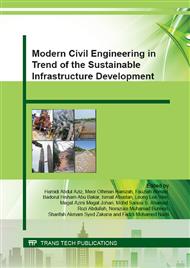p.51
p.57
p.63
p.71
p.77
p.83
p.89
p.95
p.101
A Microscopic Dynamics of Crowd Behavior for Crowd Evacuation Simulation in the Event of a Tsunami Disaster
Abstract:
This paper attempts to demonstrate the simulation of evacuation in the event of a tsunami disaster from the perspectives of microscopic dynamics of crowd behavior. In this contribution, microscopic modeling is performed by using DEM-based crowd behavior simulator, CBS-DE, in which each individual in a crowd is modeled distinctly. The simulator is capable to track the trajectory and rotation of each individual and therefore, suitable in reproducing the details of the evacuation process. In relation to the evacuation process, we have conducted a study at Langkawi International Airport, Malaysia (LIA). Current condition of evacuation process at LIA was reproduced microscopically under two conjectural scenarios. By using microscopic model, adverse scenarios at LIA were studied to highlight the evacuation behavior. The scenario where evacuees have to change their direction can be simulated significantly. In the present conducted simulations, a realistic scenario of an evacuation process evolving in the dynamics virtual 3D environment was produced. Time series of the accumulative number of persons completed the evacuation was presented graphically.
Info:
Periodical:
Pages:
77-82
Citation:
Online since:
October 2015
Keywords:
Price:
Сopyright:
© 2015 Trans Tech Publications Ltd. All Rights Reserved
Share:
Citation:


